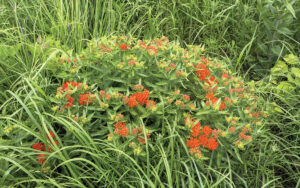 In times when resources are scare, partnerships are the key to helping us achieve shared goals. During the recent Illinois state budget impasse, electric cooperatives played a critical role in helping the Illinois Department of Natural Resources (IDNR) keep our Illinois State Parks open. You understood the economic value that parks bring to neighboring communities, and you stuck with us during an extremely difficult time. It wasn’t easy, and I appreciate that together we were able to accomplish something that should have been impossible – keeping our parks and state facilities open for the citizens of Illinois. For all that you have done to support the State and the Department of Natural Resources, please accept my heartfelt thanks.
In times when resources are scare, partnerships are the key to helping us achieve shared goals. During the recent Illinois state budget impasse, electric cooperatives played a critical role in helping the Illinois Department of Natural Resources (IDNR) keep our Illinois State Parks open. You understood the economic value that parks bring to neighboring communities, and you stuck with us during an extremely difficult time. It wasn’t easy, and I appreciate that together we were able to accomplish something that should have been impossible – keeping our parks and state facilities open for the citizens of Illinois. For all that you have done to support the State and the Department of Natural Resources, please accept my heartfelt thanks.
Today, I am seeking your help to tackle another issue that is important to IDNR and the members of Illinois rural communities. The Monarch butterfly has been declining in numbers since the early 1990s. Now, the U.S. Fish and Wildlife Service will make a decision on listing the butterfly as a threatened or endangered species by the summer of 2019. IDNR already has begun organizing interested groups from agriculture, conservation, transportation, education and utility companies to come together and develop a conservation plan for the Monarch. The goal is for the states to take the lead on Monarch conservation and hopefully make its listing unnecessary.
The Department hosted an initial meeting Sept. 9 with 90 participants. Utility companies are an important component of any conservation plan because they manage many miles and acres of rights-of-way and easements where power lines are located. It’s not hard to imagine that someday these places can be used by migrating monarchs to rest and refuel. The Fish and Wildlife Service is considering a goal of more than one billion – that’s billion with a b – new milkweed plants as part of this initiative.
The meeting was just a start, and there’s much more work to be done in the next three years. You can join in the conversation by signing up on the IDNR website: https://www.dnr.illinois.gov/conservation/NaturalHeritage/Pages/MonarchButterflySummit.aspx.
 Helping out can be even easier. Consider leaving some portions of your property for wildlife, including butterflies. Common milkweed, the Monarch caterpillar’s host plant, grows readily with little prompting from people in unattended places – like roadsides, fencerows and rights of way. For those in town who prefer a more manicured look, consider adding one of several native milkweed species to flower gardens. Butterfly milkweed, with its bright orange flowers, is both beneficial and beautiful. It also does not have the tendency to grow tall like common milkweeds. Swamp milkweed and purple milkweed also are great additions to gardens and flower at different times.
Helping out can be even easier. Consider leaving some portions of your property for wildlife, including butterflies. Common milkweed, the Monarch caterpillar’s host plant, grows readily with little prompting from people in unattended places – like roadsides, fencerows and rights of way. For those in town who prefer a more manicured look, consider adding one of several native milkweed species to flower gardens. Butterfly milkweed, with its bright orange flowers, is both beneficial and beautiful. It also does not have the tendency to grow tall like common milkweeds. Swamp milkweed and purple milkweed also are great additions to gardens and flower at different times.
Conservation of a species in trouble is a challenge; that’s for sure. But people have shown over and over again that when we work together we can solve problems and bring back species on the brink. Just look back at the success story of the American bald eagle. Here in Illinois, many species we take for granted today, were all but eliminated by the early 1900s. There were few, if any, white-tailed deer, wild turkeys, beaver and river otters left

in the state. Through the work of dedicated conservationists, they are thriving today. And the latest success story is the return of the bobcat to the forests of Illinois, particularly in the southern half.
I don’t have to tell you that when a species is listed, its conservation can become expensive and controversial. That’s why we have a unique opportunity to act during the next three years to set the Monarch on a path to sustainability before such strong action as federal listing is needed. We know we can do it. We’ve done it before. And with your help, we will be successful again.








